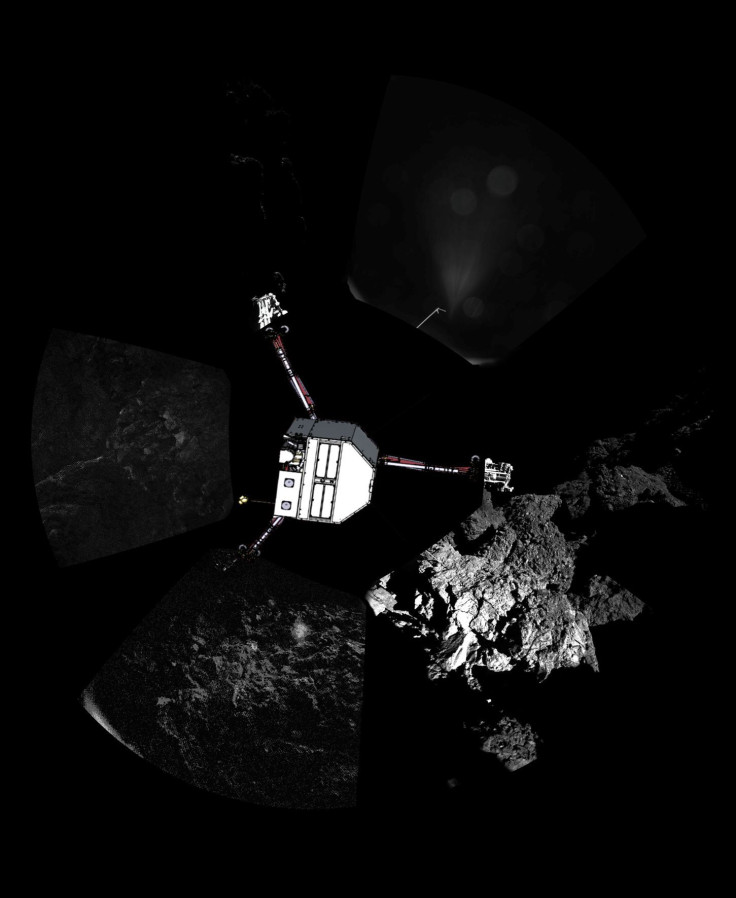Comet Landing Documentary: Watch Philae's Historic Mission Unfold In New PBS Special Here

The European Space Agency's historic comet landing may not have ended quite the way they wanted it to, but the Philae lander made the most of its short time on comet 67P/Churyumov–Gerasimenko. To celebrate the event, PBS has created a documentary, "To Catch a Comet," detailing the decade-long Rosetta mission; it will air on Wednesday at 10 p.m. EST.
The ESA spent more than 10 years chasing comet 67P. The Rosetta spacecraft launched in 2004 and spent seven years getting into position to rendezvous with the comet. Rosetta was put into hibernation in 2011, and engineers woke the sleeping spacecraft in January 2014 in preparation for an August date to catch the comet.
Iain Riddick, executive producer of the PBS documentary, described January's wake-up as the "beginning of the beginning" in an interview with International Business Times.
“This spacecraft, powered by solar panels, has gone farther from the sun than any other spacecraft," Riddick said. "To help that, they switched it off. They realized the only way they were going to get to this comet was to put [Rosetta] into deep-space hibernation, which meant switching off all instruments except the key instruments to keep its fuel lines defrosted.”
After the successful rendezvous, Rosetta began riding shotgun with comet 67P but it had another important mission: land a probe on the comet. A relatively flat location on the "head" lobe of the peanut-shaped comet, dubbed Agilkia, was chosen and Nov. 12 was set as the date for the historic comet landing.
For everyone involved in the project, including ESA and Philae Control Team, the mission was going as smoothly as one could hope for landing something on a rock 317 million miles from Earth. "Everyone knew, within the agency, they had their own particular jobs, but what I think it showed was the real effort to collaborate. Everyone knew that they relied on everyone else to succeed. Success wasn't down to one department; it was down to multiple departments," Riddick said.
"I think that's what is so exciting about doing science filmmaking and scientific exploration. This is 25 years in the making, 10 years in flight, and it's not something any one country does. It's something humans do as a species. You have the whole European network of countries working together, you have an instrument onboard from NASA, and this endeavor is something we do as a species because it's really important. It crosses any sort of political divide and that, for me, is what is so powerful about it," Riddick said.
On Nov. 12, Rosetta was in position and Philae separated from the spacecraft with no issues. But Philae could not stick the landing. The lander bounced around several times on comet 67P and its harpoons did not fire. Philae ended up on its side and in a crevice that limited the amount of light the lander needed to recharge its batteries. Philae was able to send a massive packet of data, including the first photo from a comet's surface, before powering off. The science gained from just a small amount of time on the comet could be invaluable and provide new insights into how water, and life, originated on Earth.
"Rosetta has performed so many firsts. From the spacecraft being the farthest to fly from the sun powered by solar panels, the first spacecraft to intercept a comet, the first spacecraft to fly back with a comet, the first spacecraft to carry a lander and put the lander on the comet. There are so many firsts I think you can divide it into the engineering challenge, sort of like landing a cosmic fly on a cosmic bullet, you know? It's so hard but they managed to achieve that," Riddick said.
"The science phase really began when the spacecraft got into the orbit of the comet and could start sampling its atmosphere. That increased when Philae landed, and I think that's now just going to ramp up as the comet nears the sun and really forms a massive coma. It's certainly not over. It's like the beginning of the next beginning."
PBS' comet landing documentary can be viewed on the Web before it premieres on Wednesday at 10 p.m. EST. The documentary will include interviews with ESA members and can be viewed below.
The preliminary analysis that Philae's Cometary Sampling and Composition Experiment, COSAC, "sniffed" organic molecules in the comet's atmosphere is already cause for excitement. It's still too early to tell what Philae found; scientists will analyze the data collected by the lander for months to learn more about the primitive "building blocks" of the solar system.
Philae's final fate could be determined in the next few months. As comet 67P enters the inner solar system, the lander might get enough sunlight to restart. Riddick holds out hope that the lander can continue its mission. In its second life, Philae could possibly add to the trove of science it already delivered to ESA, including new data on comet activity and atmospheric composition.
© Copyright IBTimes 2024. All rights reserved.






















